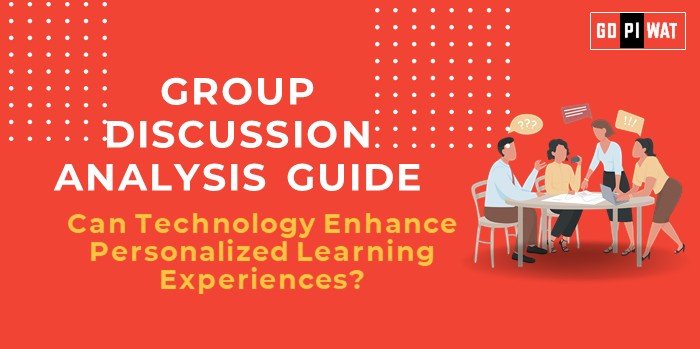📋 Group Discussion Analysis Guide: Can Technology Enhance Personalized Learning Experiences?
🌐 Introduction to Personalized Learning Through Technology
“In an era of digital transformation, technology has the potential to redefine how individuals learn, offering tailored solutions that cater to unique needs and preferences.”
Personalized learning leverages digital tools such as AI, adaptive learning platforms, and data analytics to create individualized education pathways. This method promises enhanced engagement, retention, and outcomes compared to traditional models.
📊 Quick Facts and Key Statistics
- EdTech Market Size: $254 billion globally in 2024, projected to reach $605 billion by 2027 (Statista).
- Learning Platforms Usage: 75% of schools in developed nations use adaptive learning tools (OECD, 2023).
- AI in Education: 45% of EdTech companies are integrating AI for personalization (HolonIQ, 2024).
- Efficacy: Personalized learning programs improve retention rates by 30% on average (Harvard Business Review, 2023).
🏗️ Stakeholders and Their Roles
- Students: Primary beneficiaries; gain customized learning experiences.
- Educators: Leverage technology to better address diverse learning needs.
- EdTech Companies: Provide the tools and platforms for personalization.
- Governments: Facilitate funding, policy frameworks, and infrastructure.
- Parents: Key supporters ensuring adoption and success at home.
🎯 Achievements and Challenges
✅ Achievements
- Improved Accessibility: Platforms like Khan Academy provide free, tailored education to millions.
- Enhanced Engagement: Tools like Duolingo gamify learning for better retention.
- Data-Driven Insights: AI-powered platforms analyze student performance for real-time feedback.
- Global Reach: Programs accessible across urban and rural areas, bridging education gaps.
⚠️ Challenges
- Digital Divide: Limited access to technology in underdeveloped regions.
- Teacher Adaptation: Resistance to change among educators accustomed to traditional methods.
- Data Privacy: Concerns about the ethical use of student data.
🌍 Global Comparisons
- Success: Finland’s AI-driven educational systems enhance student outcomes significantly.
- Challenges: Sub-Saharan Africa struggles with technological adoption due to infrastructure issues.
Case Study: India’s Diksha platform demonstrates scalable personalized learning for diverse student demographics.
📜 Structured Arguments for Discussion
- Supporting Stance: “Technology revolutionizes learning by addressing individual needs, leading to better outcomes.”
- Opposing Stance: “Dependence on technology risks alienating students without access to digital tools.”
- Balanced Perspective: “While technology enhances learning, equal focus on access and training is critical.”
💬 Effective Discussion Approaches
- Opening Approaches:
- Statistical Impact: “With EdTech projected to grow by 20% annually, the shift toward personalized learning is undeniable.”
- Case Study Opening: “India’s Diksha initiative shows how technology can transform rural education.”
- Counter-Argument Handling: Emphasize hybrid models combining digital tools and traditional methods to address challenges.
📈 Strategic Analysis of Strengths and Weaknesses
🏆 Strengths
- Tailored learning paths
- Data-driven decision-making
⚠️ Weaknesses
- High initial costs
- Limited teacher training
💡 Opportunities
- AI advancements
- Increasing smartphone penetration
⚡ Threats
- Cybersecurity risks
- Equity concerns
📚 Connecting with B-School Applications
- Real-World Applications:
- AI implementation projects
- Case studies on successful EdTech strategies
- Sample Interview Questions:
- “How can EdTech bridge the gap between urban and rural learners?”
- “Discuss the role of AI in creating personalized education pathways.”
- Insights for Students:
- EdTech startups as entrepreneurial ventures
- Research on hybrid learning models


